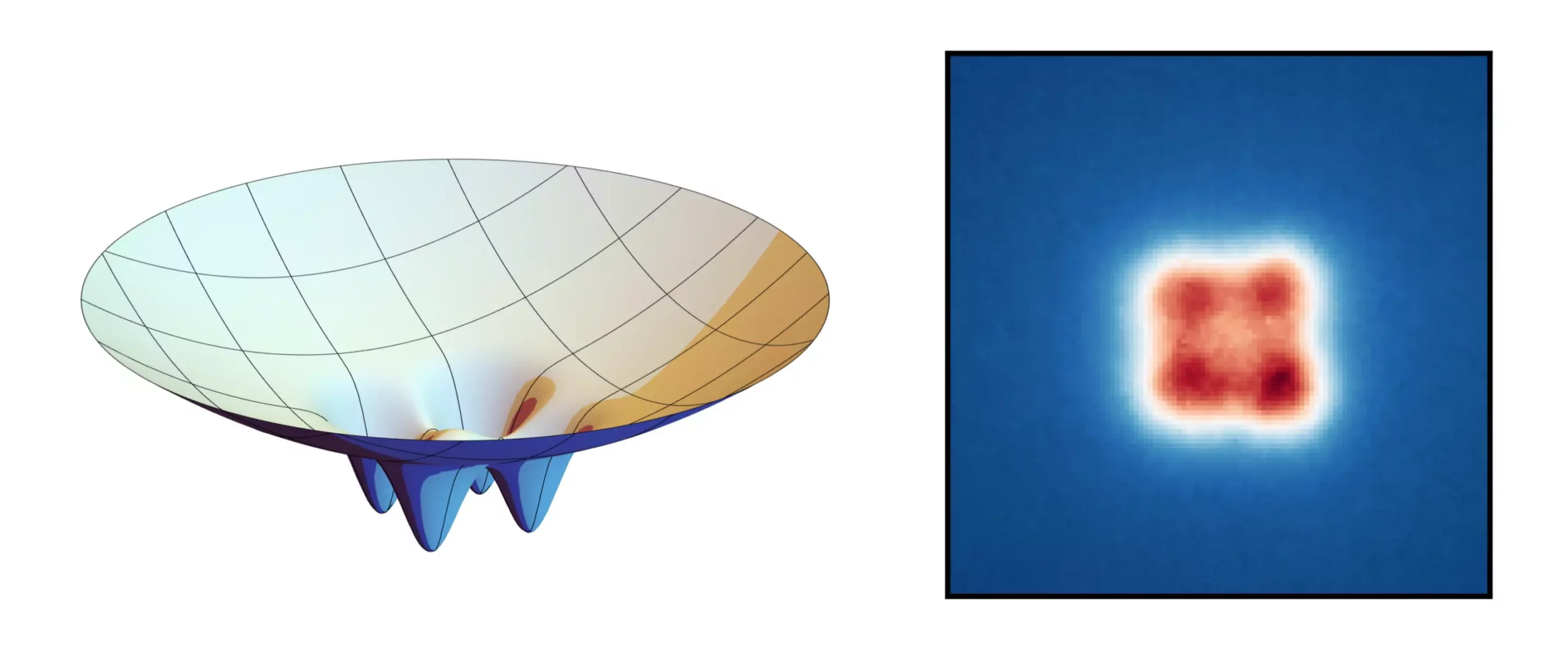The ability to shape light particles into a type of “super photon” with specific lattice structures has opened up a new realm of possibilities in the field of quantum physics. Researchers at the University of Bonn have made significant advancements in influencing the design of Bose-Einstein condensates by using “tiny nano molds.” This breakthrough paves the way for potential applications in secure communication and information exchange.
When a large number of light particles are cooled to extremely low temperatures and confined in a compact space, they merge into a single super photon known as a Bose-Einstein condensate. Typically, this condensate appears as a vague speck of light. However, the researchers at the Institute of Applied Physics at the University of Bonn have succeeded in imprinting a lattice structure on the condensate, creating a more defined pattern.
The process involves filling a container with a dye solution and exciting the dye molecules with a laser to produce photons. These photons bounce between reflective surfaces within the container, gradually cooling down until they form a super photon. By adding small indents to the reflective surfaces, the researchers create regions where the condensate prefers to stay, similar to dividing water between cups arranged in a quadratic form.
Applications in Secure Communication
The unique lattice structures formed in the condensate have the potential to be used in developing tap-proof communication systems. Quantum entanglement, where the state of one photon impacts the state of others, could be utilized for secure information exchange among multiple participants. By manipulating the form of the reflective surfaces, Bose-Einstein condensates can be split between numerous lattice sites, enabling secure communication between a large number of individuals in discussions or transactions.
The ability to deliberately create specific emission patterns in Bose-Einstein condensates opens up a range of possibilities for various applications. By further refining the shaping of super photons with nano molds, researchers can explore new avenues for secure communication, encryption, and information processing. This study marks a significant step towards harnessing the unique properties of quantum physics for practical purposes.
The research conducted at the University of Bonn sheds light on the exciting potential of shaping super photons with nano molds for secure communication. By imprinting lattice structures on Bose-Einstein condensates, researchers have demonstrated the ability to influence the behavior of light particles at a quantum level. This breakthrough opens up new possibilities for tap-proof communication systems and quantum entanglement, providing a glimpse into the future of secure information exchange.

